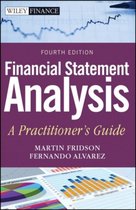Summary
Summary Financial Statement Analysis & Valuation
- Course
- Institution
- Book
Samenvatting van alle lectures van Financial Statement Analysis & Valuation, plus uitwerking van een aantal theoretische tentamenvragen. Summary of all lectures of Financial Statement Analysis & Valuation, plus some elaborations of theoretical exam questions.
[Show more]




